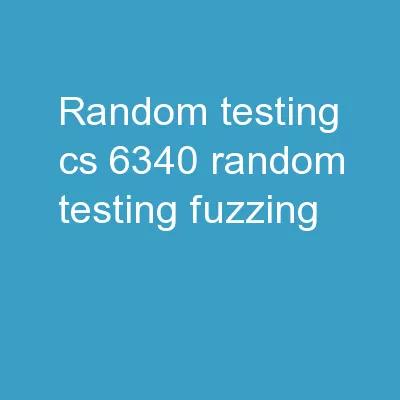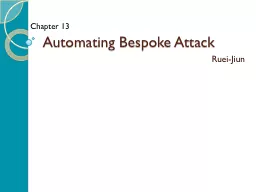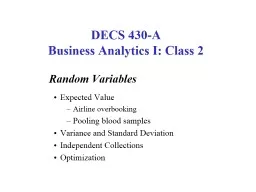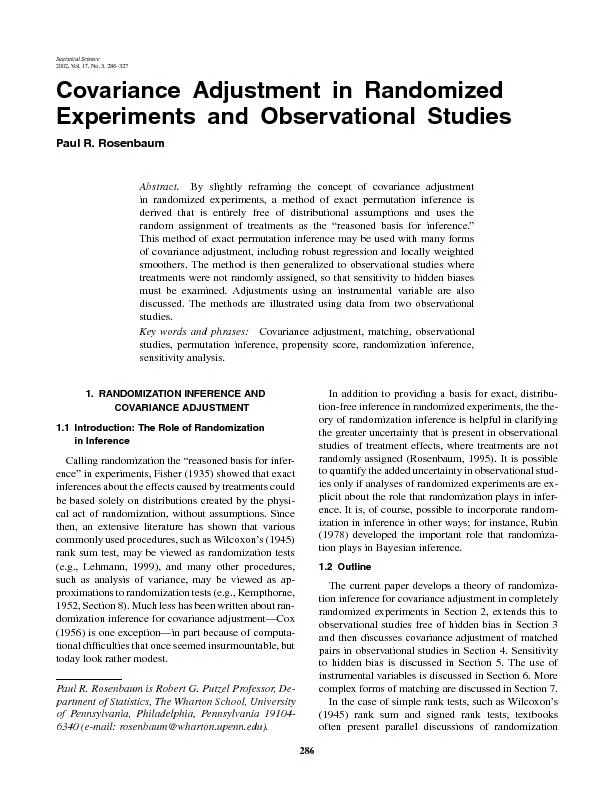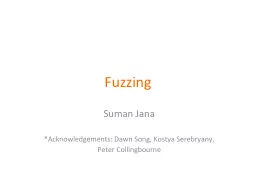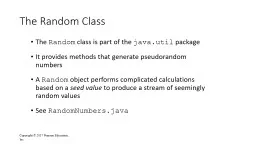PPT-Random Testing CS 6340 Random Testing (Fuzzing)
Author : mitsue-stanley | Published Date : 2019-03-16
Feed random inputs to a program Observe whether it behaves correctly Execution satisfies given specification Or just doesnt crash A simple specification Special
Presentation Embed Code
Download Presentation
Download Presentation The PPT/PDF document "Random Testing CS 6340 Random Testing (F..." is the property of its rightful owner. Permission is granted to download and print the materials on this website for personal, non-commercial use only, and to display it on your personal computer provided you do not modify the materials and that you retain all copyright notices contained in the materials. By downloading content from our website, you accept the terms of this agreement.
Random Testing CS 6340 Random Testing (Fuzzing): Transcript
Download Rules Of Document
"Random Testing CS 6340 Random Testing (Fuzzing)"The content belongs to its owner. You may download and print it for personal use, without modification, and keep all copyright notices. By downloading, you agree to these terms.
Related Documents

